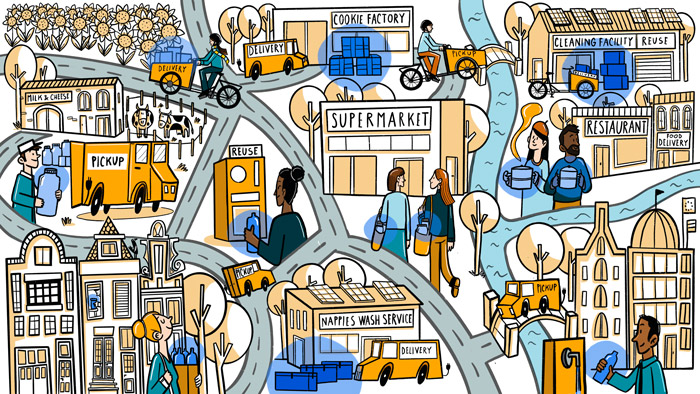
Mother nature had it right. A balanced system and a healthy functioning world is one in which everything has a purpose and nothing goes to waste. Decay, in the natural world, is integral to renewal, unlocking nutrients that allow new life to thrive. It is a circular system that stands in sharp contrast to the linear system that currently runs our economy: we extract natural resources, manufacture products, and dispose of the majority of those products—which become “waste.” This is why the linear economy is also referred to as the “take-make-waste” model, in which natural resources are used unsustainably to the detriment of our planet. In this model, the waste we create gets incinerated, landfilled, or dumped arbitrarily in the environment, leaching harmful chemicals into our air, land, and water—threatening life and disrupting our ecosystems.
Our global reliance on single-use plastics epitomises our linear economy. Half of all plastic produced—over 300 million tons a year—is designed to be used only once before it is discarded. Not only is it impossible for plastics to fully decompose (they only break down into smaller and smaller pieces), they are rarely recycled. Only 9% of plastics ever produced since the 1950s have been recycled—the rest has become litter in our oceans, microplastics in our drinking water, and poison to our marine life.
A circular economy would prevent products from becoming “waste” altogether. While the recycling economy functions as an “open loop,” where even the materials that get recycled and reused ultimately end up in landfill, a circular economy functions with a “closed loop,” where materials are perpetually repurposed. A circular economy therefore asks producers to build this model into their business structure. They become responsible for ensuring that the materials they use never become waste but are re-integrated into their supply chain. Reuse systems are key strategies to enabling our transition into a circular economy. Businesses can start small by not only offering options for refillable bottles and food containers but also incentivising their patrons to use them, choosing to avoid monodose packaging (such as individual sachets of sugar or ketchup) and ordering in bulk, and offering pick-up services for the packaging they use when delivering goods. On a larger scale, companies can invest in packaging materials whose quality won’t degrade over time (allowing them to reuse this same packaging and avoid a continuous need for virgin material), and organise among sectors to standardise reusable packaging.
Waste isn’t a natural occurrence—it is a concept that our society has accepted for too long and which demands course correction. Waste is a byproduct of a linear economy; through a circular economy, waste can and should be made obsolete.
Written by Natasha Naayem. Illustration by @circular_flanders.